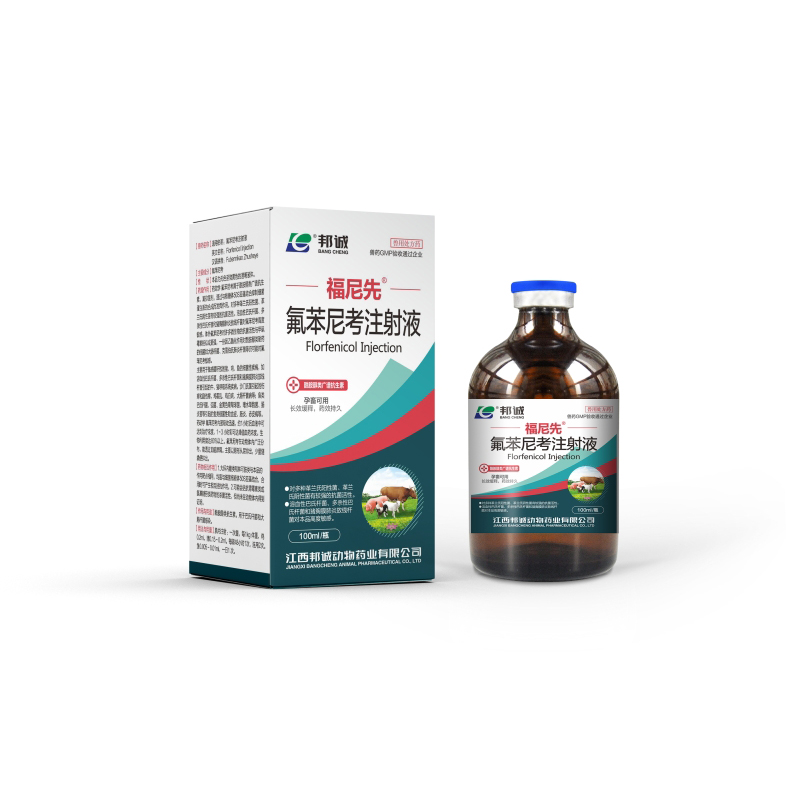Pharmacodynamics flufenicol is a broad spectrum antibiotic.
Of aminools, a bacteriosuppressor, and acts by binding with the ribosome 50s subunit to inhibit the synthesis of bacterial proteins. It has strong antibacterial activity against a variety of gram-positive and gram-negative bacteria. Pasteurella hemolyticus, pasteurella multocida and actinobacillus suis pleuropneumoniae were highly sensitive to flufenicol. In vitro, the antimicrobial activity of flufenicol against many microorganisms is similar or stronger than that of sulfenicol, and some bacteria that are resistant to aminools due to acetylation, such as escherichia coli and klebsiella pneumoniae, may still be sensitive to flufenicol.
It is mainly used for the bacterial diseases of pig, chicken and fish caused by sensitive bacteria, such as the respiratory diseases of cattle and pigs caused by pasteurella hemolyticus, pasteurella multocida and actinobacillus pleuropneumoniae. Typhoid and paratyphoid caused by salmonella, chicken cholera, chicken white dysentery, colibacillosis, etc.; fish pasteurella, vibrio, staphylococcus aureus, hydroomonas, enteritis and other bacteria caused by fish bacterial septicemia, enteritis, erythroderma and soon.
Pharmacokinetics flufenicol is quickly absorbed by internal administration, and the therapeutic concentration can be reached in the blood after about 1 hour, and the peak blood concentration can be reached in 1 to 3 hours. The bioavailability is more than 80%. Flufenicol is widely distributed in animals and can cross the blood-brain barrier. It is excreted mainly in the urine in its original form and in small amounts in the faeces.
1. Macrolides and lincoamines have the same target as this product, they are combined with the bacterial ribosome 50s subunit, and can produce antagonistic effects when combined.
2. It may antagonize the bactericidal activity of penicillins or aminoglycosides, but it has not been proved in animals.
Amidoalcohol antibiotics, highly sensitive to Pasteurella hemolyticus, Pasteurella multocida and actinobacillus pleuropneumoniae, used for Pasteurella and Escherichia coli infections.
Intramuscular injection: one dose, per 1kg body weight, 0.2ml for chicken, 0.15 ~ 0.2ml for sheep and pigs, 0.075 ~ 0.1ml for horses and cattle. Once every 48 hours, twice in succession. Fish 0.005 to 0.01ml once a day.
1. This product has certain immunosuppressive effect when used higher than the recommended dose.
2. It has fetal toxicity, and should be used with caution during pregnancy and lactating livestock.
1. the laying period of laying hens is prohibited.
2. animals with severe immune deficiency or vaccination period should be prohibited.
3. animals with renal insufficiency should be properly reduced or extended administration interval time.







